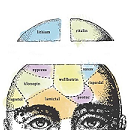Many neuroscientific studies are based on relatively small sample sizes, but with large data sets — together, that makes the studies rife for generating apparently meaningful results that are actually just being generated by chance background “noise,” according to a new study discussed by Neuroskeptic in Discover. And many neuroscientific studies have not been correcting for these possible biases.
Machine Learning: Exceeding Chance Level By Chance (Discover, January 18, 2015)











